| Corcoran Technical Trading Patterns For October 24 |
| By Clive Corcoran |
Published
10/24/2008
|
Stocks
|
Unrated
|
|
|
|
Corcoran Technical Trading Patterns For October 24
Trading in Asia on Friday has produced the kind of action that could be bringing us closer to some greater clarity on the depth of the global recession that looms ahead.
The Nikkei 225 (^N225) lost almost ten percent and has now returned exactly to the 2003 lows that I have discussed here several times.
Technical indications suggest that other global indices need to perform this test before there will be any commitment of the long only funds to equities. The hedge fund industry is in disarray and the ongoing de-leveraging and redemptions will continue to see a lot of selling under duress. Recent estimates are suggesting that perhaps a third of all such funds could be ready to go out of business.
New insitutional capital needs to be convinced that much of this disruptive unwinding is out of the way before it wants to make long term commitments to value plays in equities.
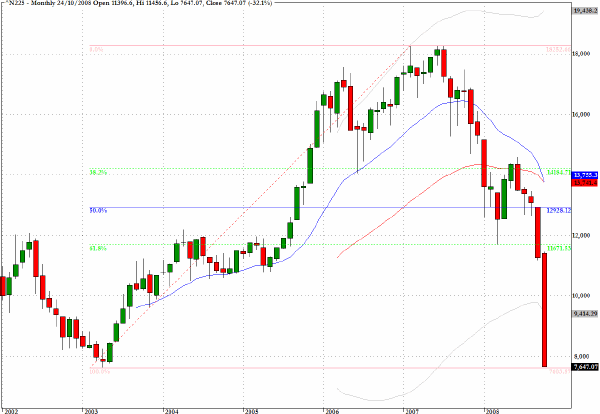
London's FTSE fell almost five percent within the first ten minutes of trading on Friday morning. The long term chart suggests that a testing of the 2002/3 lows will now be a prerequisite before calling any kind of stability in this index.
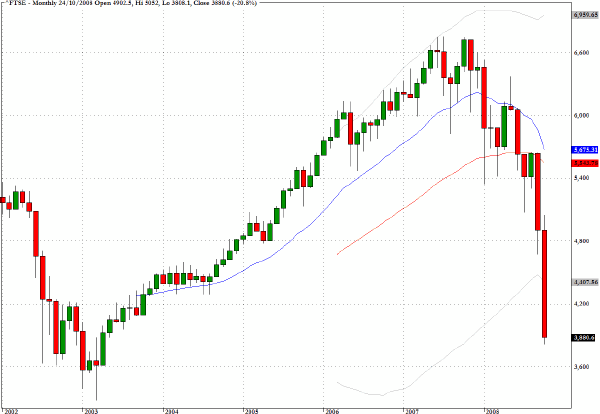
German's DAX is continuing to move down and has now clearly dropped below the 62% retracement of the 2002/7 move. It is noticeable that on the monthly chart below there is no lower tail to the October 2008 candlestick - in other words this index has continued to register new lows on an almost daily basis.
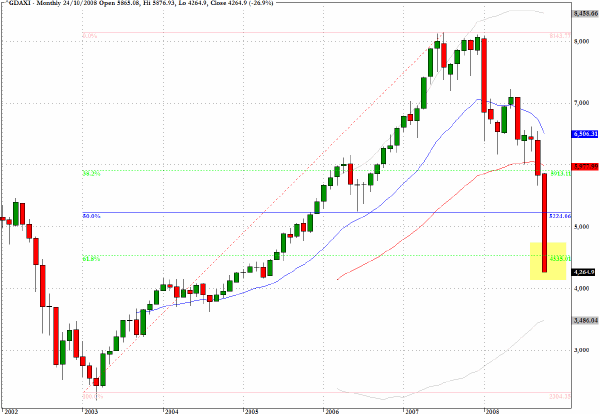
With other global indices appearing to be shaping up for critical testing of the 2002/3 levels, the lows from October 2002, which were revisited in March 2003, on the Dow Jones Industrials (^DJIA) should prove to be too strong an "attractor" to be avoidable.
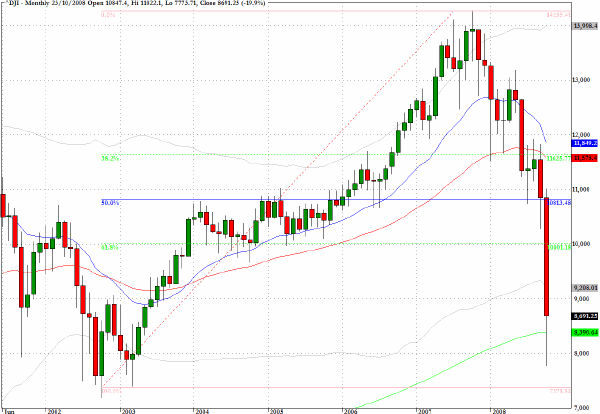
XLK, the SPDR Technology sector fund, could be setting up to revisit its lowest close on the monthly chart which was just above the $11 level in September 2002
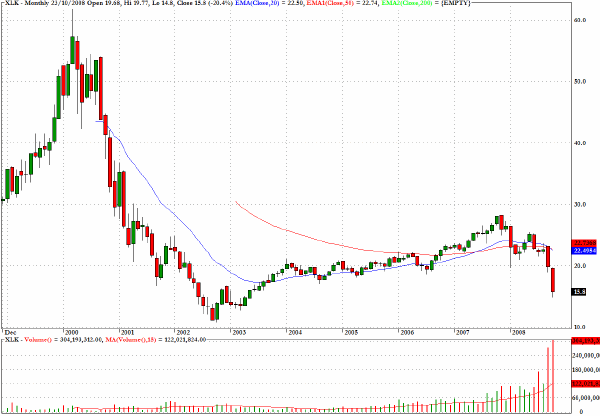
The chart for XLY is worth monitoring in the next few sessions for evidence as to whether the markets can stabilize in the vicinity of the lows seen during 2002.
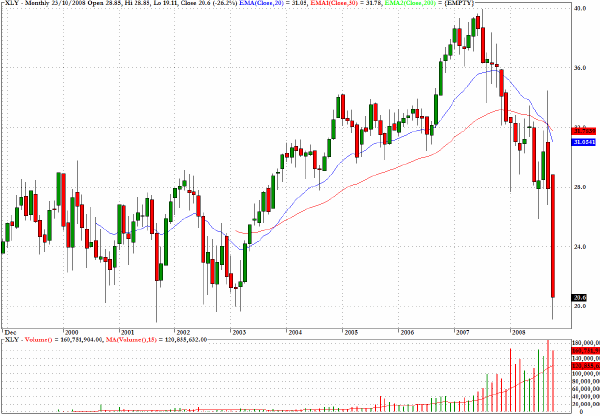
IYR, the sector fund that tracks the Dow Jones US Real Estate index was flatlining near the $30 level during the early part of this millenium, and the almost forty percent drop seen in October so far suggests that we may be about to revisit these levels during the current recession.
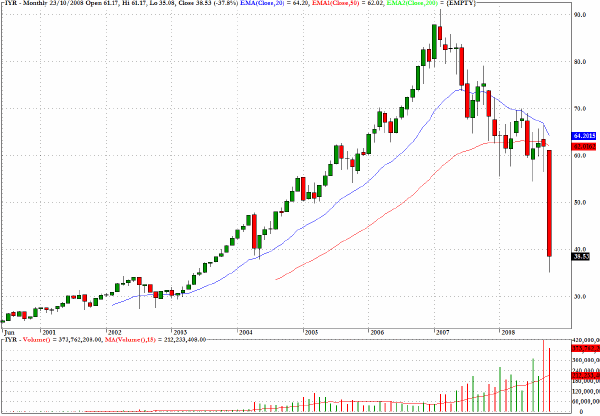
Clive Corcoran is the publisher of TradeWithForm.com, which provides daily analysis and commentary on the US stock market. He specializes in market neutral investing and and is currently working on a book about the benefits of trading with long/short strategies, which is scheduled for publication later this year.
Disclaimer
The purpose of this article is to offer you the chance to review the trading methodology, risk reduction strategies and portfolio construction techniques described at tradewithform.com. There is no guarantee that the trading strategies advocated will be profitable. Moreover, there is a risk that following these strategies will lead to loss of capital. Past results are no guarantee of future results. Trading stocks and CFD's can yield large rewards, but also has large potential risks. Trading with leverage can be especially risky. You should be fully aware of the risks of trading in the capital markets. You are strongly advised not to trade with capital.
|